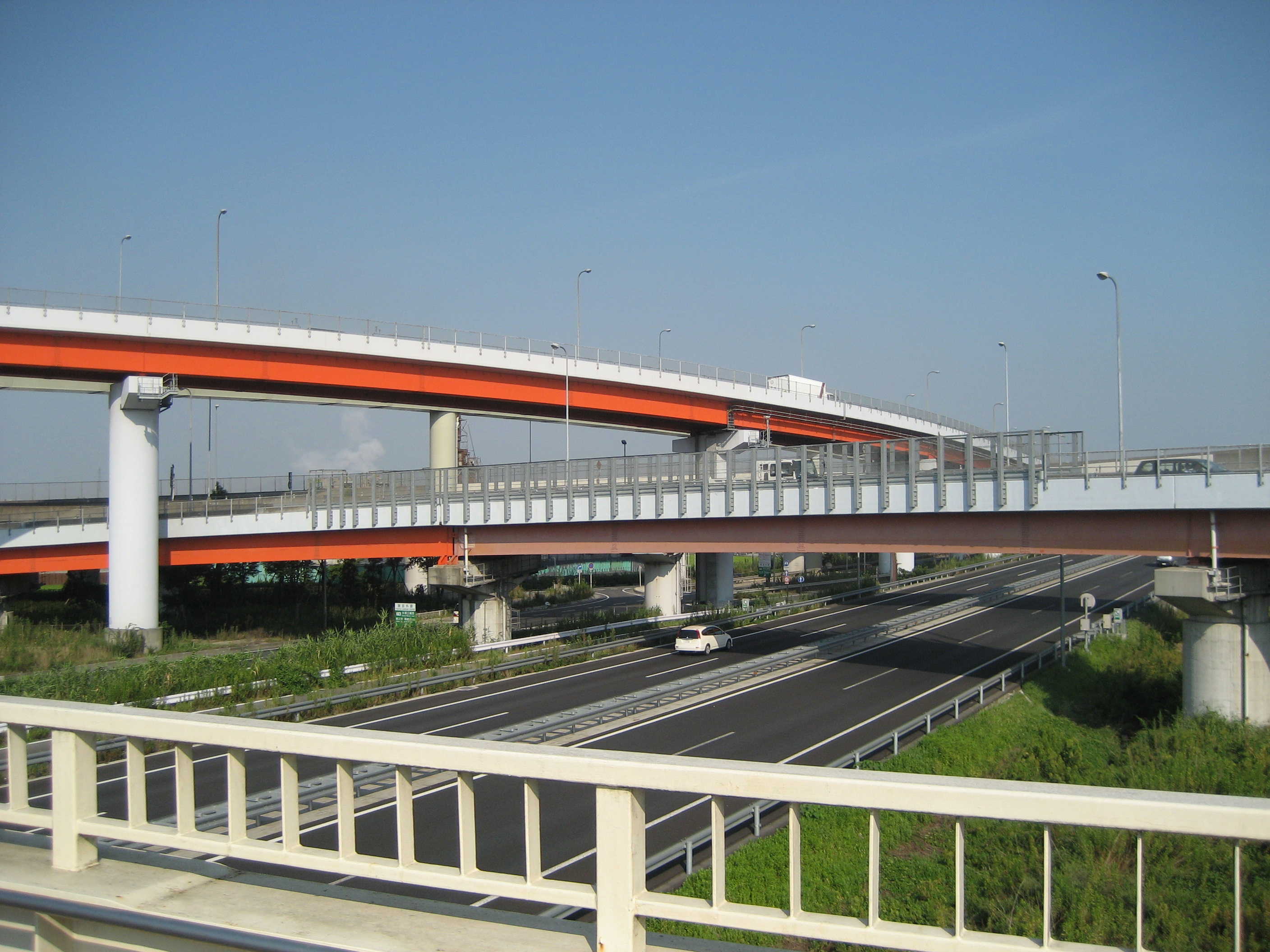Tokyo-Gaikan Expressway on:
[Wikipedia]
[Google]
[Amazon]
The is a national expressway in
 The name Gaikan refers to the route's status as an outer ring road (
The name Gaikan refers to the route's status as an outer ring road (
Image:Tokyo_Gaikan_Expressway_and_Japanese_national_route_298.jpg, Gaikan above Route 298
Image:Sakitama_bridge,_Saitama,_Japan.jpg, Sakitama Bridge
Image:Tokyo_Gaikan_Expressway_and_Tohoku_Shinkansen.jpg, Gaikan passing under T┼Źhoku Shinkansen
Image:Bijogi-Jct-2005 02 18.jpg, Traffic lights at Bijogi JCT
East Nippon Expressway Company
{{coord missing, Japan Expressways in Japan Proposed roads in Japan Ring roads in Japan Roads in Chiba Prefecture Roads in Saitama Prefecture Roads in Tokyo 1992 establishments in Japan
Japan
Japan is an island country in East Asia. Located in the Pacific Ocean off the northeast coast of the Asia, Asian mainland, it is bordered on the west by the Sea of Japan and extends from the Sea of Okhotsk in the north to the East China Sea ...
. It is owned and operated by East Nippon Expressway Company.
Overview
 The name Gaikan refers to the route's status as an outer ring road (
The name Gaikan refers to the route's status as an outer ring road (beltway
A ring road (also known as circular road, beltline, beltway, circumferential (high)way, loop or orbital) is a road or a series of connected roads encircling a town, city or country. The most common purpose of a ring road is to assist in reducin ...
) for Tokyo
Tokyo, officially the Tokyo Metropolis, is the capital of Japan, capital and List of cities in Japan, most populous city in Japan. With a population of over 14 million in the city proper in 2023, it is List of largest cities, one of the most ...
. The expressway is also referred to simply as Gaikan for short. It is the second of three expressway ring routes in the greater Tokyo area: the innermost is the Central Circular Route, then the Gaikan, and the outermost is the Ken-┼ī Expressway. The Inner Circular Route of the Shuto Expressway
The is a network of Toll road, tolled expressways in the Greater Tokyo Area of Japan. It is operated and maintained by the .
Most routes are Grade separation, grade separated and have many sharp curves and multi-lane merges that require cauti ...
is apparently not considered a true ring road, as the alternate Japanese name of the Ken-┼ī Expressway (English name is Metropolitan Inter-City Expressway) is õĖēńÆ░ńŖČķüōĶĘ», with the first character meaning 'three' not 'four.'
A section of the expressway on the northern side of the Tokyo area was the first to open to traffic ( ┼īizumi Junction to Misato-minami Interchange). Most of this section is an elevated roadway built on the median of National Route 298 with curved windbreaks on both sides. Most of the roadway has two lanes in each direction (three lanes from ┼īizumi Junction to Wak┼Ź-kita Interchange).
The eastern section from Misato to Ichikawa was opened to the public on 2 June 2018, three years after schedule. The western section from Izumi to the Chuo expressway is under construction, while the final section linking to the Tomei expressway is still at the planning stage. The western section will pass through the densely populated suburbs of western Tokyo; large parts of it will consist of tunnels constructed at least 40 m underground ( deep underground).
The toll for a regular passenger car is currently 500 yen regardless of the distance travelled. Electronic Toll Collection
Electronic toll collection (ETC) is a wireless system to automatically collect the usage fee or Road pricing, toll charged to vehicles using toll roads, HOV lanes, toll bridges, and toll tunnels. It is a faster alternative which is replacing Tol ...
(ETC) is accepted.
List of interchanges and features
* PA - parking area, TB - toll gateGallery
References
External links
East Nippon Expressway Company
{{coord missing, Japan Expressways in Japan Proposed roads in Japan Ring roads in Japan Roads in Chiba Prefecture Roads in Saitama Prefecture Roads in Tokyo 1992 establishments in Japan